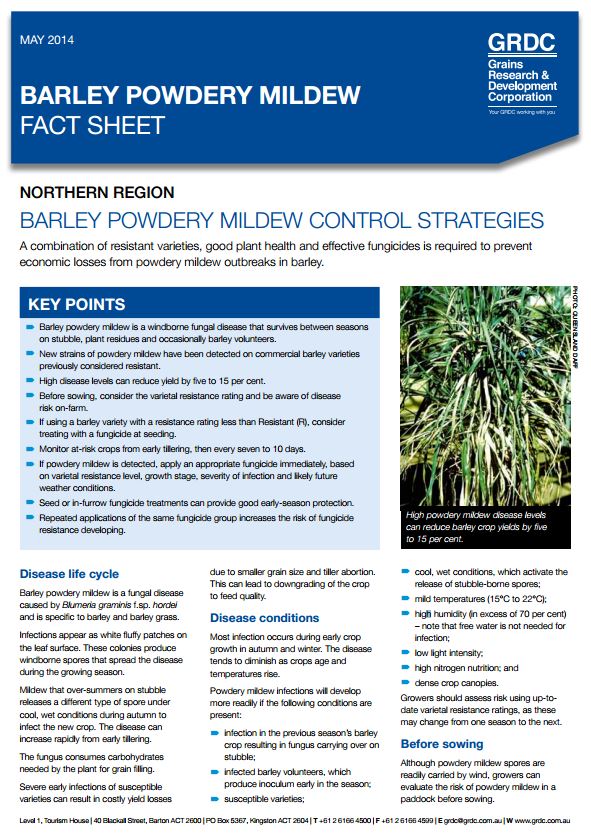Barley powdery mildew control strategies
Published: 5 May 2014
A combination of resistant varieties, good plant health and effective fungicides is required to prevent economic loss from powdery mildew outbreaks in barley.
Key points
- Barley powdery mildew is a windborne fungal disease that survives between seasons on stubble, plant residues and occasionally barley volunteers.
- New strains of powdery mildew have been detected on commercial barley varieties previously considered resistant.
- High disease levels can reduce yield by five to 15 per cent.
- Before sowing, consider the varietal resistance rating and be aware of disease risk on-farm.
- If using a barley variety with a resistance rating less than Resistant (R), consider treating with a fungicide at seeding.
- Monitor at-risk crops from early tillering, then every seven to 10 days.
- If powdery mildew is detected, apply an appropriate fungicide immediately, based on varietal resistance level, growth stage, severity of infection and likely future weather conditions.
- Seed or in-furrow fungicide treatments can provide good early-season protection.
- Repeated applications of the same fungicide group increases the risk of fungicide resistance developing.
Download PDF
Region: North
GRDC Project Code: DAQ1306-002RMX, CUR1106-001RTX,
Was this page helpful?
YOUR FEEDBACK
To protect your privacy, please do not include contact information in your feedback. If you would like
a response, please contact us.

